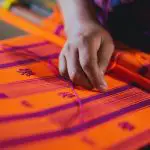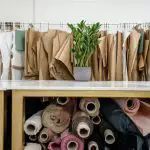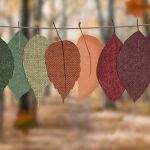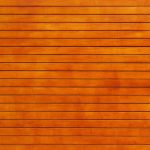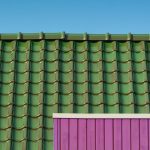You won't believe the incredible things you can do with Mod Podge on fabric! If you're looking to elevate your crafting game, you're in for a treat.
From creating custom fabric designs to sealing and protecting your masterpieces, Mod Podge is a versatile tool that can take your fabric projects to the next level.
Get ready to discover five clever ways to use Mod Podge on fabric that will enhance your crafting skills and bring a professional touch to your creations.
Whether you're a seasoned crafter or just starting out, these techniques will open up a world of possibilities for your fabric projects.
Let's dive in and explore the endless potential of Mod Podge!
Key Takeaways
- Transfer images onto fabric using Mod Podge
- Apply Mod Podge and decorative cutouts for fabric decoupage
- Use fabric printing and collage techniques for fabric embellishments
- Reinforce and seal fabric seams with Mod Podge for fabric protection
Custom Fabric Designs
How can you create personalized fabric designs using Mod Podge?
Custom fabric designs are a fantastic way to add a personal touch to your projects, and with Mod Podge, it's easier than you might think.
One of the most popular methods for creating custom designs on fabric is by using Mod Podge to transfer images onto the fabric. This technique allows you to print any design or image onto fabric using a regular inkjet printer. Once the image is printed, you can use Mod Podge to transfer it onto the fabric, creating a seamless and personalized design.
Additionally, you can also directly apply Mod Podge to the fabric and then layer on decorative elements like glitter, sequins, or even additional pieces of fabric to create a unique custom design.
Another popular method is fabric printing, where you can use Mod Podge to adhere fabric onto a base fabric, creating intricate and personalized patterns.
These techniques offer endless possibilities for creating one-of-a-kind fabric designs using Mod Podge.
Fabric Decoupage
You can enhance fabric surfaces by applying Mod Podge and decorative cutouts to create striking decoupage designs. Fabric decoupage is a creative way to transform plain fabrics into personalized works of art. This unique fabric application allows you to customize clothing, accessories, and home décor items with intricate designs and patterns.
To start a fabric decoupage project, gather your materials, including Mod Podge, fabric, decorative paper cutouts, and a brush for application. Once you have everything you need, begin by prepping the fabric and cutouts, ensuring they're clean and dry. Then, carefully apply a layer of Mod Podge to the fabric surface and gently place the decorative cutouts on top. Smooth out any air bubbles or wrinkles, and then seal the design with another layer of Mod Podge.
Fabric decoupage opens up a world of possibilities for creative fabric projects, allowing you to experiment with different textures, colors, and designs. Whether you're upcycling old clothing or adding a unique touch to home décor items, fabric decoupage offers a fun and versatile way to express your personal style through fabric art.
Fabric Embellishments
When adding fabric embellishments, start by gathering your materials and selecting the embellishments that best suit your project. Whether you're looking to add a personal touch to a garment or create a unique piece of fabric art, there are several clever ways to use Mod Podge on fabric. Two popular methods for fabric embellishments are fabric printing and fabric collage. Fabric printing allows you to transfer designs onto fabric, while fabric collage enables you to layer different pieces of fabric to create a textured, visually appealing surface.
| Fabric Printing | Fabric Collage |
|---|---|
| Use stencils and fabric paint to create intricate designs on fabric. | Layer fabric pieces to create a textured and visually interesting surface. |
| Experiment with block printing or screen printing techniques for unique patterns. | Incorporate different fabrics, such as lace, denim, or tulle, to add dimension and variety to your project. |
| Try using natural objects like leaves and flowers as stamps for a nature-inspired look. | Use Mod Podge to adhere the fabric pieces together and seal the collage for a professional finish. |
| Customize your fabric with your own artwork or designs for a personalized touch. | Add embellishments like beads, sequins, or embroidery to enhance the visual appeal of your fabric collage. |
| Consider experimenting with photo transfer techniques to add images to your fabric projects. | Explore different textures and colors to create a dynamic and visually stimulating fabric collage. |
Fabric Sealing and Protection
To protect your fabric projects and ensure their longevity, it's essential to apply a layer of Mod Podge as a sealant. Mod Podge offers a versatile solution for fabric sealing and protection, providing a range of benefits that enhance the durability and appearance of your creations.
Here are some key ways in which Mod Podge can be used to safeguard and enhance your fabric projects:
- Seam Sealing: Mod Podge can be used to reinforce and seal fabric seams, preventing fraying and ensuring the longevity of your sewing projects.
- Waterproofing: By applying a layer of Mod Podge, you can add a waterproof barrier to your fabric, making it suitable for outdoor and functional items such as tote bags or outdoor cushions.
- Stain Protection: Mod Podge acts as a shield against stains, preserving the fabric's original appearance and making it easier to clean and maintain.
- Color Enhancement: When applied over fabric, Mod Podge can enhance and enrich the colors, adding a beautiful sheen and vibrancy to your projects.
Fabric Patchwork Techniques
After sealing and protecting your fabric with Mod Podge, it's essential to explore fabric patchwork techniques to create stunning and durable projects. Quilting tips are essential for achieving professional-looking results. When creating a fabric collage, it's important to select fabrics that complement each other in color and pattern.
Consider using Mod Podge to adhere fabric pieces onto a base fabric, creating a seamless and secure bond. For a striking effect, experiment with different shapes and sizes, and consider incorporating elements like lace or trims for added texture.
When stitching the fabric pieces together, ensure that the seams are sturdy and even to maintain the integrity of the project. Utilize quilting tips such as pressing seams open or to the side to reduce bulk and achieve a smooth, professional finish.
Additionally, exploring fabric collage ideas can inspire unique and personalized projects. Incorporating diverse fabrics, such as denim, linen, or even recycled materials, can add depth and character to your patchwork designs.
Frequently Asked Questions
Can Mod Podge Be Used to Create Waterproof Fabric for Outdoor Use?
Yes, you can use Mod Podge to create waterproof fabric for outdoor use. It provides an effective waterproofing technique and an alternative method to protect fabric. Ensure durability with proper maintenance for your outdoor fabric.
Is It Possible to Use Mod Podge on Delicate or Sheer Fabrics Without Ruining Them?
Yes, you can use Mod Podge on delicate or sheer fabrics without ruining them. Applying a thin layer and using gentle techniques like dabbing instead of brushing can help preserve the fabric's integrity.
Can Mod Podge Be Used to Create a Raised Texture on Fabric for Added Dimension?
Yes, you can use Mod Podge to create textured designs on fabric for added dimension. It's ideal for fabric embellishment, allowing you to achieve unique raised textures with ease, enhancing the visual and tactile appeal of your fabric projects.
Are There Any Special Considerations for Using Mod Podge on Stretchy or Elastic Fabrics?
When using Mod Podge on stretchy or elastic fabrics, be sure to apply it lightly to avoid stiffness. Consider testing on a small area first, and avoid using on delicate fabrics. For fabric waterproofing, use a waterproof Mod Podge formula.
Can Mod Podge Be Used to Adhere Fabric to Non-Fabric Surfaces, Such as Wood or Glass?
Yes, you can use Mod Podge to adhere fabric to non-fabric surfaces like wood or glass. It provides a strong bond and can be used for fabric waterproofing, making it suitable for outdoor use.
- A Technical Guide to Meltblown Nonwoven Manufacturing - July 11, 2025
- The Pros and Cons of Nonwoven Fabrics: A Balanced View - July 11, 2025
- Nonwoven Fabric 101: Everything a Beginner Needs to Know - July 11, 2025


